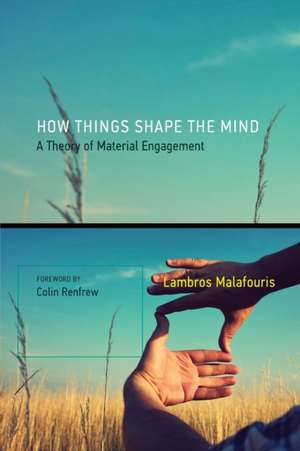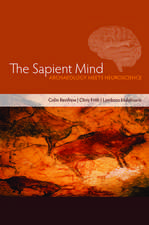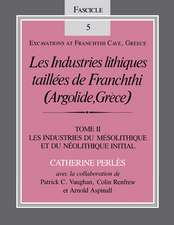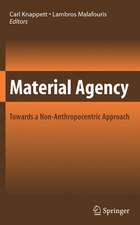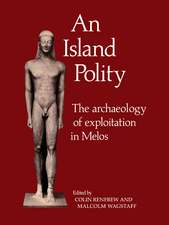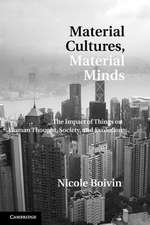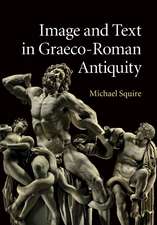How Things Shape the Mind – A Theory of Material Engagement: The MIT Press
Autor Lambros Malafouris, Colin Renfrewen Limba Engleză Paperback – 18 feb 2016
An increasingly influential school of thought in cognitive science views the mind as embodied, extended, and distributed rather than brain-bound or "all in the head.” This shift in perspective raises important questions about the relationship between cognition and material culture, posing major challenges for philosophy, cognitive science, archaeology, and anthropology. In How Things Shape the Mind, Lambros Malafouris proposes a cross-disciplinary analytical framework for investigating the ways in which things have become cognitive extensions of the human body. Using a variety of examples and case studies, he considers how those ways might have changed from earliest prehistory to the present. Malafouris's Material Engagement Theory definitively adds materiality—the world of things, artifacts, and material signs—into the cognitive equation. His account not only questions conventional intuitions about the boundaries and location of the human mind but also suggests that we rethink classical archaeological assumptions about human cognitive evolution.
Din seria The MIT Press
-
 Preț: 155.83 lei
Preț: 155.83 lei - 16%
 Preț: 661.59 lei
Preț: 661.59 lei -
 Preț: 128.67 lei
Preț: 128.67 lei -
 Preț: 229.64 lei
Preț: 229.64 lei -
 Preț: 168.59 lei
Preț: 168.59 lei - 14%
 Preț: 437.85 lei
Preț: 437.85 lei - 20%
 Preț: 336.15 lei
Preț: 336.15 lei -
 Preț: 102.29 lei
Preț: 102.29 lei -
 Preț: 107.35 lei
Preț: 107.35 lei - 20%
 Preț: 151.20 lei
Preț: 151.20 lei -
 Preț: 90.17 lei
Preț: 90.17 lei -
 Preț: 152.90 lei
Preț: 152.90 lei -
 Preț: 178.98 lei
Preț: 178.98 lei -
 Preț: 174.49 lei
Preț: 174.49 lei - 17%
 Preț: 599.95 lei
Preț: 599.95 lei - 17%
 Preț: 533.17 lei
Preț: 533.17 lei - 19%
 Preț: 123.87 lei
Preț: 123.87 lei -
 Preț: 203.41 lei
Preț: 203.41 lei - 16%
 Preț: 1201.02 lei
Preț: 1201.02 lei -
 Preț: 137.51 lei
Preț: 137.51 lei -
 Preț: 252.85 lei
Preț: 252.85 lei - 16%
 Preț: 637.28 lei
Preț: 637.28 lei - 12%
 Preț: 92.10 lei
Preț: 92.10 lei - 12%
 Preț: 523.07 lei
Preț: 523.07 lei - 20%
 Preț: 284.80 lei
Preț: 284.80 lei -
 Preț: 241.46 lei
Preț: 241.46 lei -
 Preț: 113.45 lei
Preț: 113.45 lei -
 Preț: 181.74 lei
Preț: 181.74 lei - 20%
 Preț: 338.95 lei
Preț: 338.95 lei -
 Preț: 290.07 lei
Preț: 290.07 lei - 16%
 Preț: 539.05 lei
Preț: 539.05 lei -
 Preț: 193.63 lei
Preț: 193.63 lei -
 Preț: 362.12 lei
Preț: 362.12 lei -
 Preț: 174.42 lei
Preț: 174.42 lei -
 Preț: 286.73 lei
Preț: 286.73 lei -
 Preț: 168.64 lei
Preț: 168.64 lei - 13%
 Preț: 95.97 lei
Preț: 95.97 lei - 20%
 Preț: 144.96 lei
Preț: 144.96 lei - 20%
 Preț: 127.07 lei
Preț: 127.07 lei - 14%
 Preț: 93.51 lei
Preț: 93.51 lei -
 Preț: 331.92 lei
Preț: 331.92 lei -
 Preț: 208.78 lei
Preț: 208.78 lei -
 Preț: 238.73 lei
Preț: 238.73 lei -
 Preț: 255.59 lei
Preț: 255.59 lei - 33%
 Preț: 126.59 lei
Preț: 126.59 lei -
 Preț: 366.77 lei
Preț: 366.77 lei -
 Preț: 175.42 lei
Preț: 175.42 lei -
 Preț: 250.93 lei
Preț: 250.93 lei -
 Preț: 252.58 lei
Preț: 252.58 lei -
 Preț: 115.25 lei
Preț: 115.25 lei
Preț: 318.30 lei
Nou
60.91€ • 63.75$ • 50.69£
Carte tipărită la comandă
Livrare economică 31 martie-14 aprilie
Specificații
ISBN-10: 0262528924
Pagini: 320
Ilustrații: 31 illustrations
Dimensiuni: 151 x 226 x 16 mm
Greutate: 0.42 kg
Editura: Mit Press
Seria The MIT Press
